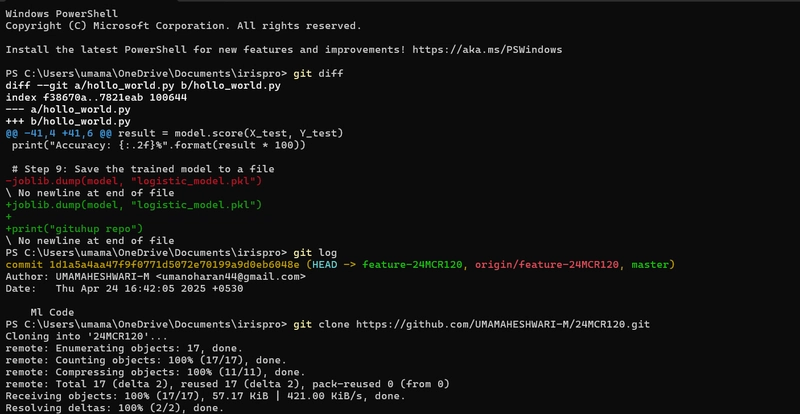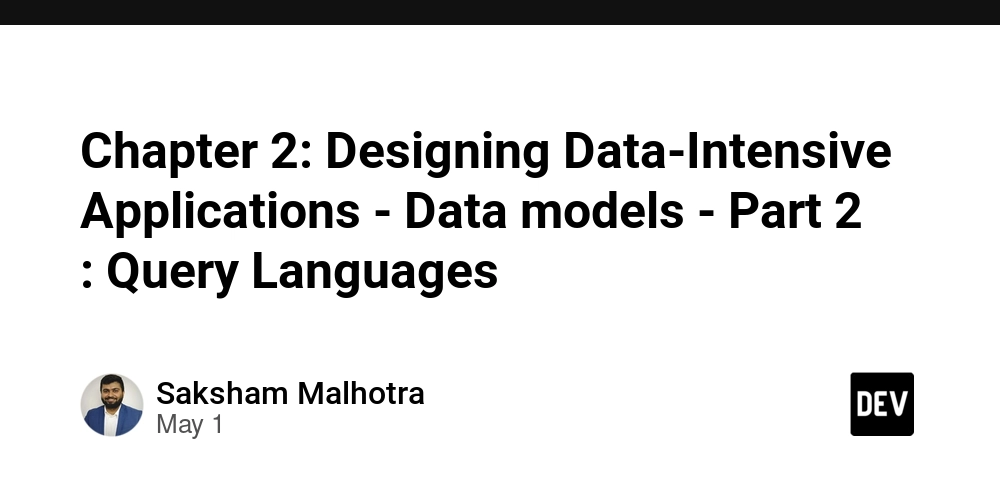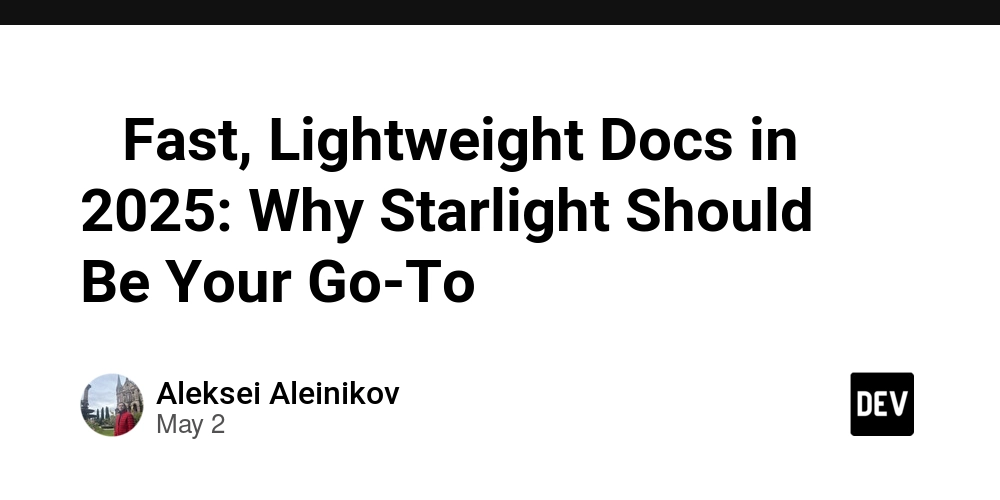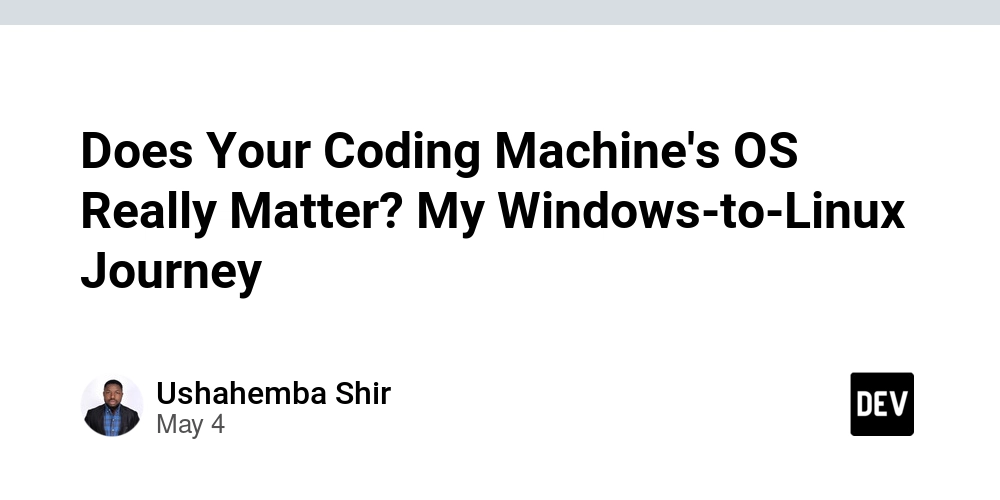Computer Science in 60 Days: The Ultimate Cheat Sheet with Examples
Mastering computer science doesn’t happen overnight, but with consistent daily learning, you can build a strong foundation. This 60-day cheat sheet outlines the essential topics in computer science, with concise explanations and practical examples to support your understanding. 60-Day Computer Science Roadmap Day 1: What is Computer Science? The study of computers, algorithms, and problem-solving using computational techniques. Day 2: History of Computing From Charles Babbage's Analytical Engine to modern microprocessors. Day 3: Binary and Number Systems Example: The decimal number 13 is 1101 in binary. Day 4: Logic Gates and Circuits Example: An AND gate returns true only if both inputs are true (1 AND 1 = 1). Day 5: Boolean Algebra Rule: A + 0 = A; A × 1 = A. Day 6: Bits, Bytes, and Encoding 1 byte = 8 bits; The character "A" is 01000001 in ASCII. Day 7: Computer Architecture Basics Components: CPU (brain), memory (workspace), I/O devices (communication). Day 8: CPU, RAM, and Storage RAM is volatile memory; HDD/SSD is persistent storage. Day 9: Operating Systems Overview Examples: Windows, macOS, Linux manage hardware and software. Day 10: Processes and Threads Google Chrome may run multiple threads for each tab. Day 11: Memory Management Example: Virtual memory uses disk space when RAM is full. Day 12: File Systems NTFS (Windows), ext4 (Linux), APFS (macOS). Day 13: Programming Paradigms Procedural: C Object-Oriented: Java Functional: Haskell Day 14: Algorithms vs Programs An algorithm is a recipe; a program is the implementation. Day 15: Pseudocode and Flowcharts Example pseudocode: IF age > 18 THEN PRINT "Adult" Day 16: Time Complexity (Big O Notation) Example: Linear search = O(n); Binary search = O(log n) Day 17: Searching Algorithms Linear search checks each item; binary search halves the list each time. Day 18: Sorting Algorithms Bubble sort repeatedly swaps adjacent elements. Example input: [5, 2, 4] → [2, 4, 5] Day 19: Recursion Example: function factorial(n) { if (n === 1) return 1; return n * factorial(n - 1); } Day 20: Data Structures Overview Structures to store and organize data: arrays, trees, graphs, etc. Day 21: Arrays and Linked Lists Array: fixed size; Linked list: dynamic and connected via pointers. Day 22: Stacks and Queues Stack: LIFO → undo operations Queue: FIFO → print jobs Day 23: Trees Example: File systems use hierarchical trees (folders within folders). Day 24: Binary Search Trees Left node < root < right node — allows efficient searching. Day 25: Graphs Used to represent networks: cities connected by roads. Day 26: Graph Traversal Depth-First Search uses a stack; Breadth-First Search uses a queue. Day 27: Hash Tables Example: hash("name") → memory location, for fast lookup. Day 28: Heaps and Priority Queues Used in scheduling systems to prioritize tasks. Day 29: Dynamic Programming Example: Fibonacci numbers with memoization to avoid recomputation. Day 30: Greedy Algorithms Example: Choosing the highest value coin first to make change. Day 31: Divide and Conquer Example: Merge sort splits the list, sorts, then merges. Day 32: Object-Oriented Programming Class Dog with properties (name, age) and methods (bark). Day 33: Functional Programming Example in JavaScript: const square = x => x * x; Day 34: Compilers and Interpreters Compiler: C (compiles to machine code) Interpreter: Python (line-by-line execution) Day 35: Programming Languages Low-level: Assembly High-level: Java, Python Scripting: JavaScript Day 36: Introduction to Databases Stores data in tables (rows and columns). Day 37: SQL Basics SELECT * FROM users WHERE age > 18; Day 38: Relational vs NoSQL Relational: MySQL NoSQL: MongoDB (document-based) Day 39: Transactions and ACID Properties A banking system ensures balance consistency after transfers. Day 40: Networking Basics A message sent over the internet travels through multiple routers. Day 41: The OSI Model 7 layers: Physical → Application. Helps standardize communication. Day 42: TCP/IP and HTTP HTTP runs over TCP/IP to fetch web pages. Day 43: IP Addressing and DNS IP: 192.168.1.1; DNS translates example.com to an IP address. Day 44: Cybersecurity Fundamentals Concepts: malware, firewalls, secure passwords. Day 45: Encryption and Hashing Encryption is reversible (AES), hashing is one-way (SHA-256). Day 46: Authentication and Authorization Login form = authentication Admin access = authorization Day 47: Software Engineering Principles DRY (Don't Repeat Yourself), KISS (Keep It Simple, Stupid) Day 48: SDLC and Agile Methodologies SDLC phases: requirements, design, implementation, testing, maintenance. Agile: fast iterations and collaboration. Day 49: Version Control with Git git init git add . git commit -m "Initial commit" Day 50: Testing and Debugging Unit tests check functions; debugging identifies and fixes issues. Day 51: System Design Fundamentals
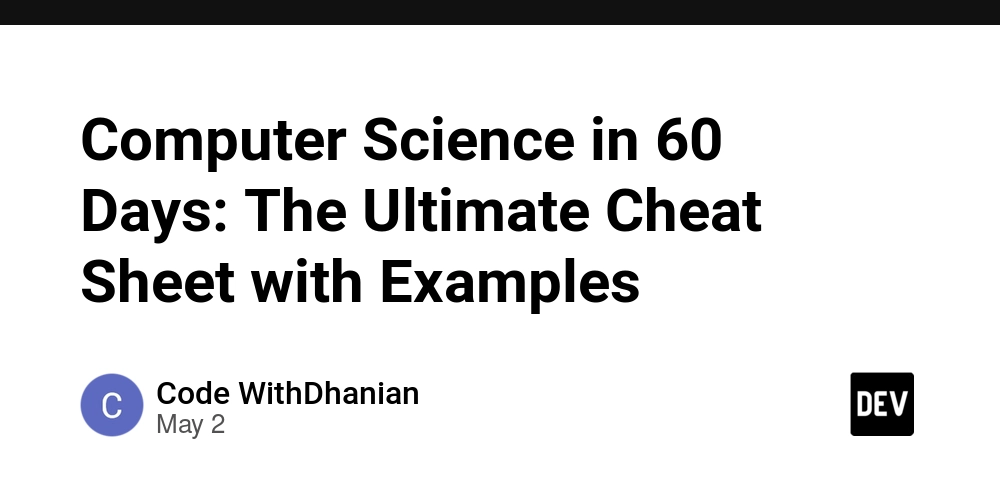
Mastering computer science doesn’t happen overnight, but with consistent daily learning, you can build a strong foundation. This 60-day cheat sheet outlines the essential topics in computer science, with concise explanations and practical examples to support your understanding.
60-Day Computer Science Roadmap
Day 1: What is Computer Science?
The study of computers, algorithms, and problem-solving using computational techniques.
Day 2: History of Computing
From Charles Babbage's Analytical Engine to modern microprocessors.
Day 3: Binary and Number Systems
Example: The decimal number 13 is 1101 in binary.
Day 4: Logic Gates and Circuits
Example: An AND gate returns true only if both inputs are true (1 AND 1 = 1).
Day 5: Boolean Algebra
Rule: A + 0 = A; A × 1 = A.
Day 6: Bits, Bytes, and Encoding
1 byte = 8 bits; The character "A" is 01000001 in ASCII.
Day 7: Computer Architecture Basics
Components: CPU (brain), memory (workspace), I/O devices (communication).
Day 8: CPU, RAM, and Storage
RAM is volatile memory; HDD/SSD is persistent storage.
Day 9: Operating Systems Overview
Examples: Windows, macOS, Linux manage hardware and software.
Day 10: Processes and Threads
Google Chrome may run multiple threads for each tab.
Day 11: Memory Management
Example: Virtual memory uses disk space when RAM is full.
Day 12: File Systems
NTFS (Windows), ext4 (Linux), APFS (macOS).
Day 13: Programming Paradigms
Procedural: C
Object-Oriented: Java
Functional: Haskell
Day 14: Algorithms vs Programs
An algorithm is a recipe; a program is the implementation.
Day 15: Pseudocode and Flowcharts
Example pseudocode:
IF age > 18 THEN
PRINT "Adult"
Day 16: Time Complexity (Big O Notation)
Example: Linear search = O(n); Binary search = O(log n)
Day 17: Searching Algorithms
Linear search checks each item; binary search halves the list each time.
Day 18: Sorting Algorithms
Bubble sort repeatedly swaps adjacent elements.
Example input: [5, 2, 4] → [2, 4, 5]
Day 19: Recursion
Example:
function factorial(n) {
if (n === 1) return 1;
return n * factorial(n - 1);
}
Day 20: Data Structures Overview
Structures to store and organize data: arrays, trees, graphs, etc.
Day 21: Arrays and Linked Lists
Array: fixed size; Linked list: dynamic and connected via pointers.
Day 22: Stacks and Queues
Stack: LIFO → undo operations
Queue: FIFO → print jobs
Day 23: Trees
Example: File systems use hierarchical trees (folders within folders).
Day 24: Binary Search Trees
Left node < root < right node — allows efficient searching.
Day 25: Graphs
Used to represent networks: cities connected by roads.
Day 26: Graph Traversal
Depth-First Search uses a stack; Breadth-First Search uses a queue.
Day 27: Hash Tables
Example: hash("name") → memory location, for fast lookup.
Day 28: Heaps and Priority Queues
Used in scheduling systems to prioritize tasks.
Day 29: Dynamic Programming
Example: Fibonacci numbers with memoization to avoid recomputation.
Day 30: Greedy Algorithms
Example: Choosing the highest value coin first to make change.
Day 31: Divide and Conquer
Example: Merge sort splits the list, sorts, then merges.
Day 32: Object-Oriented Programming
Class Dog with properties (name, age) and methods (bark).
Day 33: Functional Programming
Example in JavaScript:
const square = x => x * x;
Day 34: Compilers and Interpreters
Compiler: C (compiles to machine code)
Interpreter: Python (line-by-line execution)
Day 35: Programming Languages
Low-level: Assembly
High-level: Java, Python
Scripting: JavaScript
Day 36: Introduction to Databases
Stores data in tables (rows and columns).
Day 37: SQL Basics
SELECT * FROM users WHERE age > 18;
Day 38: Relational vs NoSQL
Relational: MySQL
NoSQL: MongoDB (document-based)
Day 39: Transactions and ACID Properties
A banking system ensures balance consistency after transfers.
Day 40: Networking Basics
A message sent over the internet travels through multiple routers.
Day 41: The OSI Model
7 layers: Physical → Application. Helps standardize communication.
Day 42: TCP/IP and HTTP
HTTP runs over TCP/IP to fetch web pages.
Day 43: IP Addressing and DNS
IP: 192.168.1.1; DNS translates example.com to an IP address.
Day 44: Cybersecurity Fundamentals
Concepts: malware, firewalls, secure passwords.
Day 45: Encryption and Hashing
Encryption is reversible (AES), hashing is one-way (SHA-256).
Day 46: Authentication and Authorization
Login form = authentication
Admin access = authorization
Day 47: Software Engineering Principles
DRY (Don't Repeat Yourself), KISS (Keep It Simple, Stupid)
Day 48: SDLC and Agile Methodologies
SDLC phases: requirements, design, implementation, testing, maintenance.
Agile: fast iterations and collaboration.
Day 49: Version Control with Git
git init
git add .
git commit -m "Initial commit"
Day 50: Testing and Debugging
Unit tests check functions; debugging identifies and fixes issues.
Day 51: System Design Fundamentals
Designing scalable systems like messaging apps or social media platforms.
Day 52: Scalability and Load Balancing
Distributing traffic across servers to handle growth.
Day 53: APIs and REST
API endpoint:
GET /users/1 returns user data in JSON.
Day 54: Cloud Computing
AWS, Azure, and Google Cloud offer scalable infrastructure and services.
Day 55: Virtualization and Containers
Docker allows apps to run in isolated environments.
Day 56: Introduction to AI and Machine Learning
Spam filters learn patterns from emails to classify new messages.
Day 57: Ethics in Computing
Examples: algorithmic bias, data privacy, misinformation.
Day 58: Technical Interview Preparation
Practice coding questions, data structures, and mock interviews.
Day 59: Building a Technical Portfolio
Host projects on GitHub with clear README files and documentation.
Day 60: Continued Learning and Growth
Join developer communities, read technical blogs, contribute to open source.
Get the Full Computer Science eBook
For in-depth explanations, illustrations, and practice questions, download the complete guide:





































































































































































![[The AI Show Episode 145]: OpenAI Releases o3 and o4-mini, AI Is Causing “Quiet Layoffs,” Executive Order on Youth AI Education & GPT-4o’s Controversial Update](https://www.marketingaiinstitute.com/hubfs/ep%20145%20cover.png)













































































































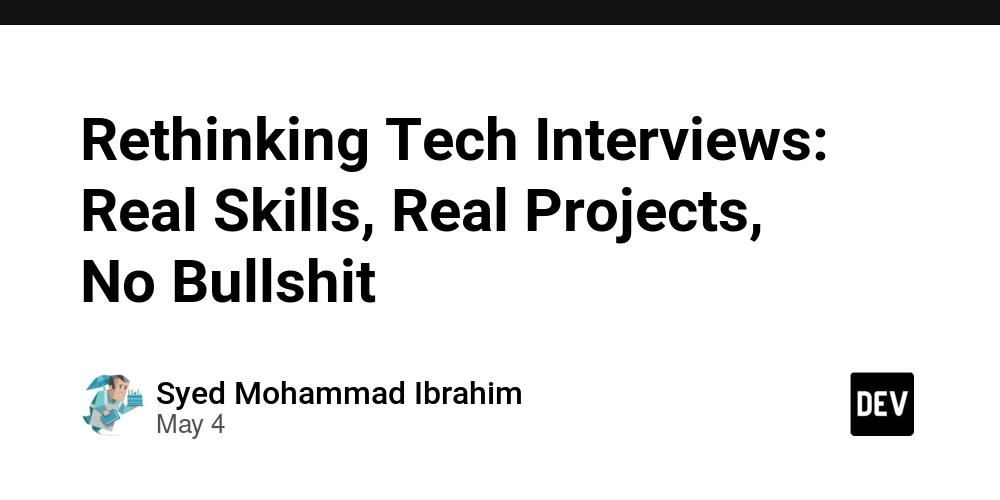
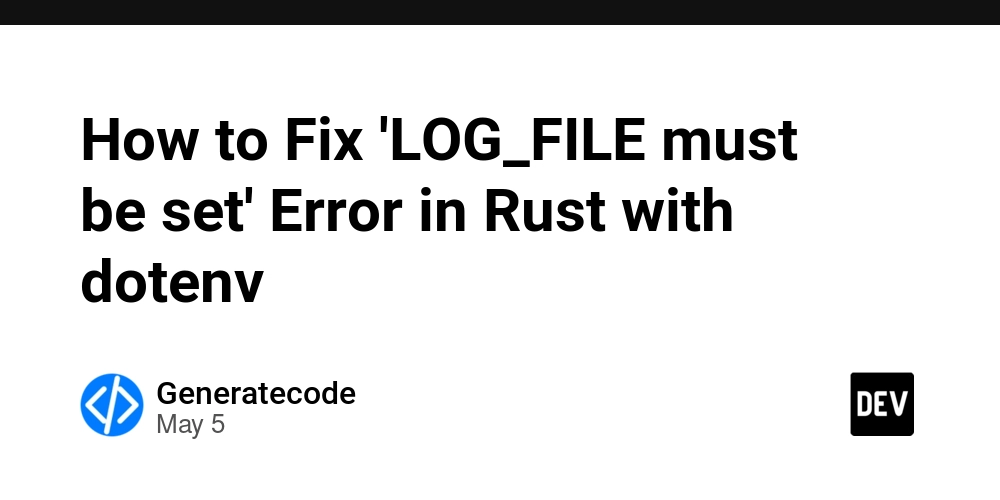













![[DEALS] Microsoft 365: 1-Year Subscription (Family/Up to 6 Users) (23% off) & Other Deals Up To 98% Off – Offers End Soon!](https://www.javacodegeeks.com/wp-content/uploads/2012/12/jcg-logo.jpg)




![From Art School Drop-out to Microsoft Engineer with Shashi Lo [Podcast #170]](https://cdn.hashnode.com/res/hashnode/image/upload/v1746203291209/439bf16b-c820-4fe8-b69e-94d80533b2df.png?#)




















![Re-designing a Git/development workflow with best practices [closed]](https://i.postimg.cc/tRvBYcrt/branching-example.jpg)




















































































(1).jpg?#)


















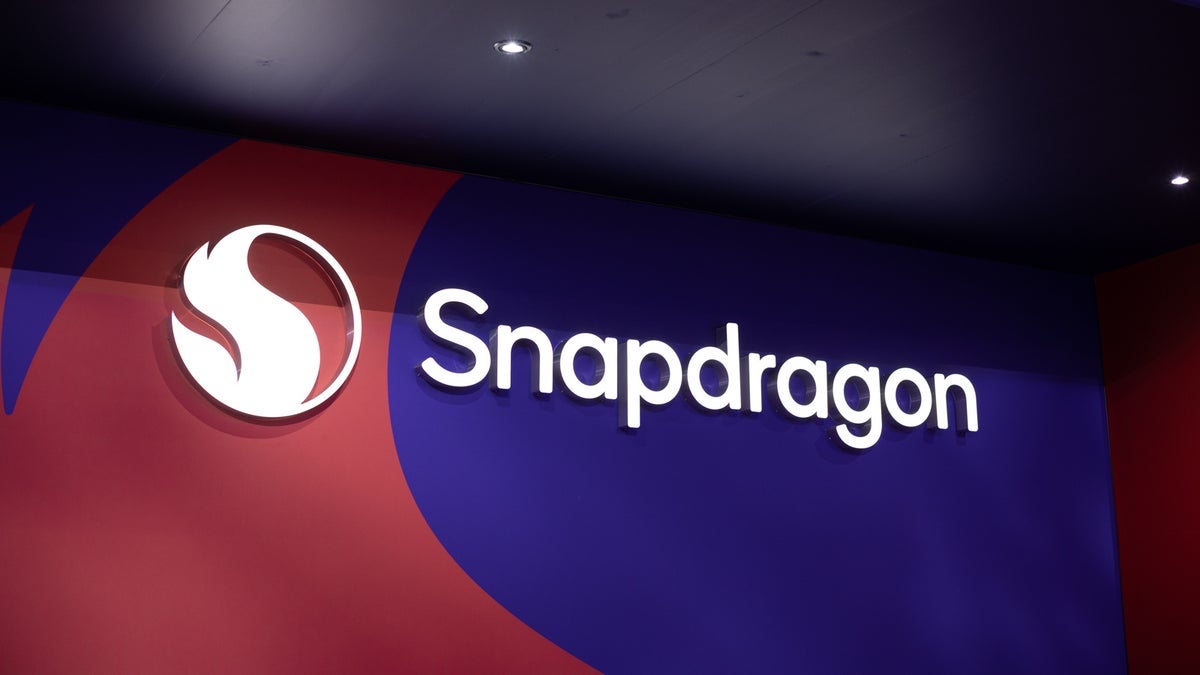











_Inge_Johnsson-Alamy.jpg?width=1280&auto=webp&quality=80&disable=upscale#)































































































![The Material 3 Expressive redesign of Google Clock leaks out [Gallery]](https://i0.wp.com/9to5google.com/wp-content/uploads/sites/4/2024/03/Google-Clock-v2.jpg?resize=1200%2C628&quality=82&strip=all&ssl=1)
![What Google Messages features are rolling out [May 2025]](https://i0.wp.com/9to5google.com/wp-content/uploads/sites/4/2023/12/google-messages-name-cover.png?resize=1200%2C628&quality=82&strip=all&ssl=1)













![New Apple iPad mini 7 On Sale for $399! [Lowest Price Ever]](https://www.iclarified.com/images/news/96096/96096/96096-640.jpg)
![Apple to Split iPhone Launches Across Fall and Spring in Major Shakeup [Report]](https://www.iclarified.com/images/news/97211/97211/97211-640.jpg)
![Apple to Move Camera to Top Left, Hide Face ID Under Display in iPhone 18 Pro Redesign [Report]](https://www.iclarified.com/images/news/97212/97212/97212-640.jpg)
![Apple Developing Battery Case for iPhone 17 Air Amid Battery Life Concerns [Report]](https://www.iclarified.com/images/news/97208/97208/97208-640.jpg)
































































































